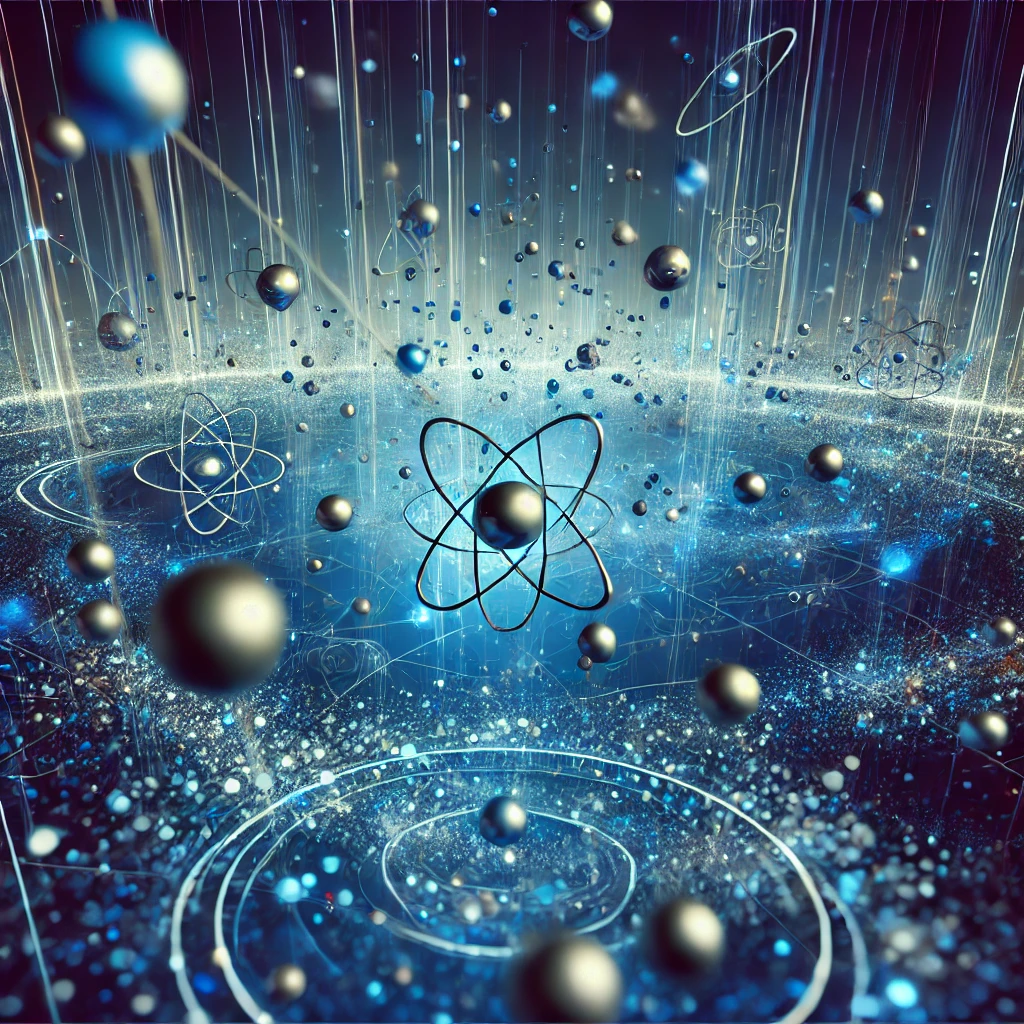
Scientific Visualization
Atomic Structures: Each isotope can be represented as a unique atomic structure. Atoms of the same element will have the same number of protons (positively charged particles in the nucleus) but differing numbers of neutrons, making each isotope distinct in atomic mass. Orbiting Particles: Electrons are often depicted as orbiting particles around the nucleus, creating a dynamic, recognizable "solar system" model. In reality, electrons exist in probability clouds rather than fixed orbits, but for visualization purposes, orbits help symbolize the electron’s path. Abstract Style: The abstract approach allows the visualization to convey scientific information artistically. This might include colorful, glowing orbits, stylized paths of electrons, and energy levels to enhance the visual appeal and make the atomic structure stand out against the background. Cosmic or Scientific Background: The background can represent the broader context of space or scientific exploration. Deep blue, black, or purple colors often symbolize space, while glowing effects and geometric shapes can add a high-tech, futuristic atmosphere. Purpose of Visualization: Such visualizations are useful in educational contexts, scientific illustrations, and thematic graphics for projects that blend science with art, especially in fields like atomic research, space exploration, or advanced technology.
Let's connect
Whether you’re interested in our services, have a question, or just want to chat about the excitingHyper Space Venture and technology, we’d love to hear from you! At World Space, we believe in the power of connection and collaboration. Reach out to us, and let’s explore how we can work together to achieve great things. Connect with us via email, social media, or our contact form—we’re here to help.
Proposals from universities, private space companies, or independent researchers.
We invite proposals that aim to advance space science, engineering, and technology. Whether you're from an academic institution, a private space tech company, or working independently in the field, we are keen to collaborate on innovative initiatives. Key areas of interest include: Satellite Development: Mini/micro/nano-satellites, payload design, orbital deployment strategies. Propulsion Systems: Research on chemical, electric, hybrid, or experimental propulsion technologies. Astrophysics: Observational and theoretical studies of celestial phenomena, cosmology, and particle astrophysics. Deep-Space Exploration: Concepts and technologies for missions beyond Earth orbit, including interplanetary and interstellar research.
Contact